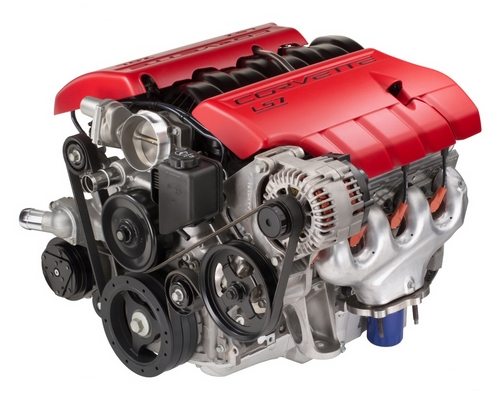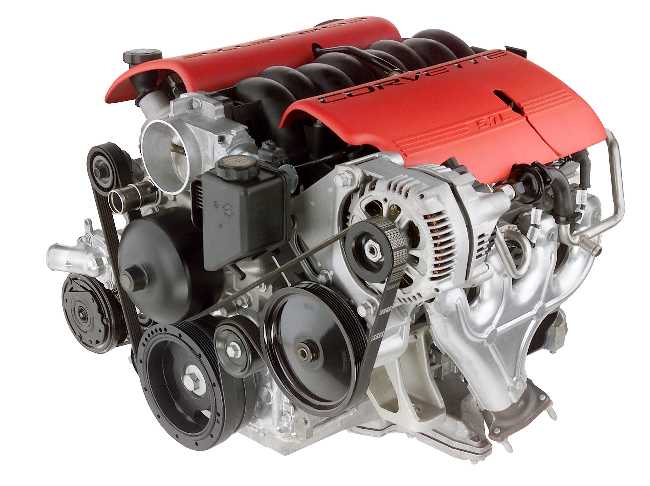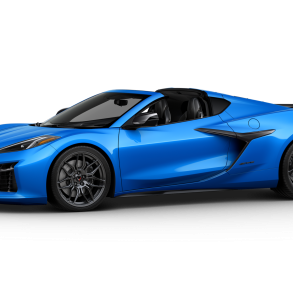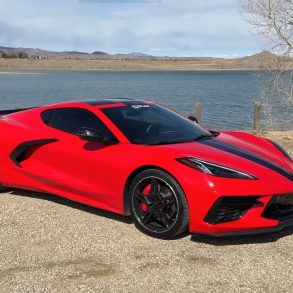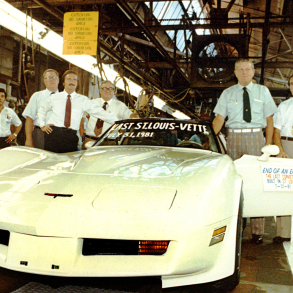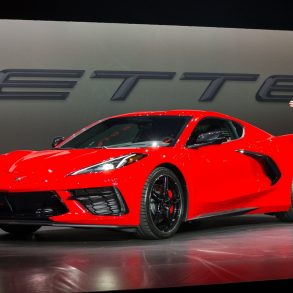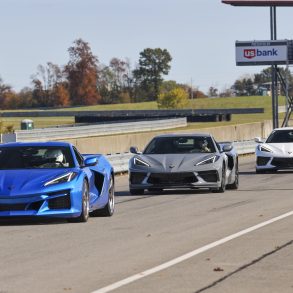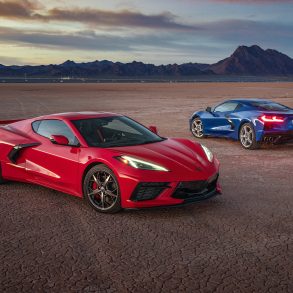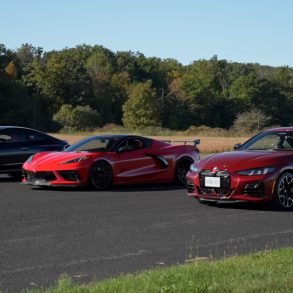Now that the 2023 Corvette C8 Z06’s 5.5L LT6 engine has been revealed with its specifications, it has already been labeled one of the all-time greats from any American sports car manufacturer. It is, indeed, fair to even call it a supercar engine, as it does match and even beat some of the naturally aspirated V8’s from across the pond! It’s only fair, then, that we look back through the progression of the Z06’s monster V8 powertrain, from the first modern C5 Z06 through to the C8 Z06.
We’ll be looking at it from a general layman’s overview, so overall numbers like horsepower, torque, capacity, and the like are going to be the focus. If you want to go further into the nitty-gritty details, the drivetrain, crankshaft, valvetrain, and all the specs that Chevy has released, we have a deep dive article here for your enjoyment.
The 2023 LT6 5.5L V8
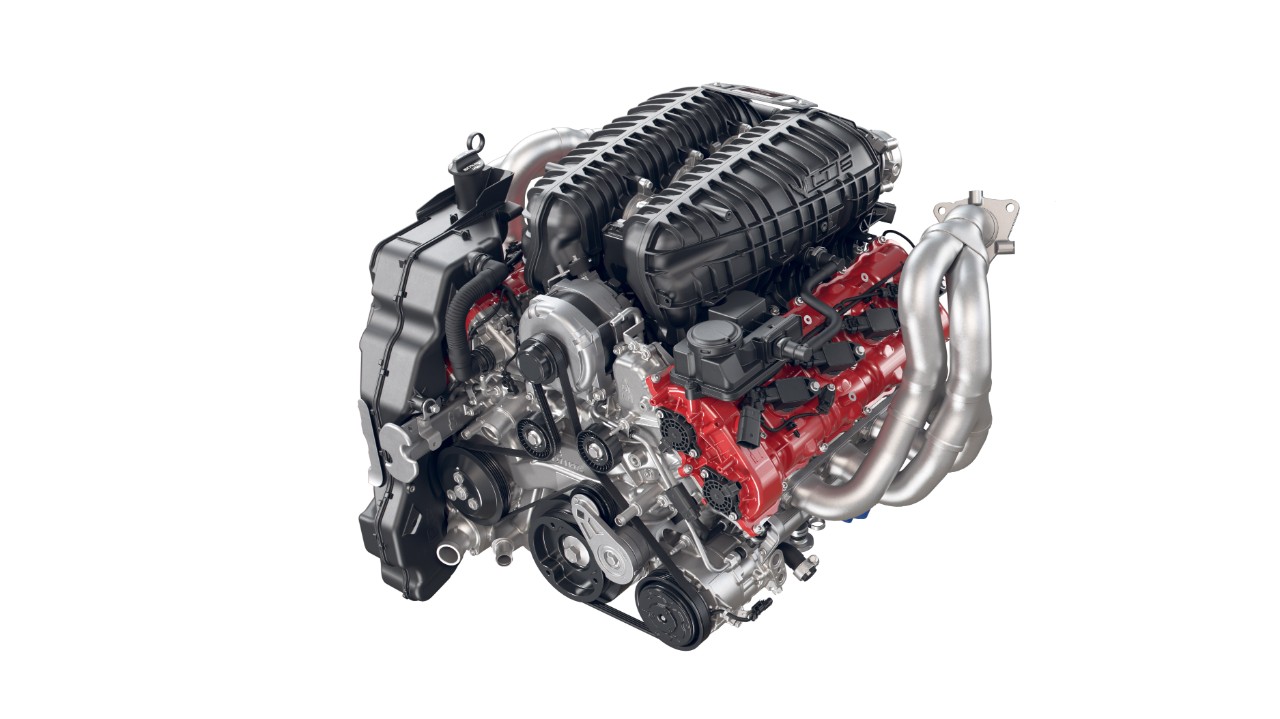
The new LT6 V8 is, at the time of this article, the single most powerful naturally aspirated 8 cylinder engine put into any production car that accepts 93 octane fuel. There are more powerful V8s out there that you can put into a car, but these are crate engines, or bored, stroked, and tuned by professional shops for drag racing usage, and usually on JP2 or 98+ octane fuel.
In terms of numbers, the LT6 chucks out 670 HP (SAE) and 460 lb-ft (SAE) of torque.
Let that sink in for a moment. Then realize that the maximum horsepower comes in at 8,400 RPM, with the engine soft-limited at 8,600 RPM, and hard-limited at an astounding 9,000 RPM.
It is also the first engine in the Z06 space that does not have a manual transmission or transaxle option. A sore point for some, but there is a very good reason for this, as the LT6 gains and drops revs so quickly that a semi-automatic DCT was the only way to keep the engine in the power band while changing gears.
So we have our basic specs: a fast-revving, 5.5L V8 with 670 HP, 460 lb-ft of torque, and a hard redline at 9,000 RPM
The 2015 LT4 6.2 V8
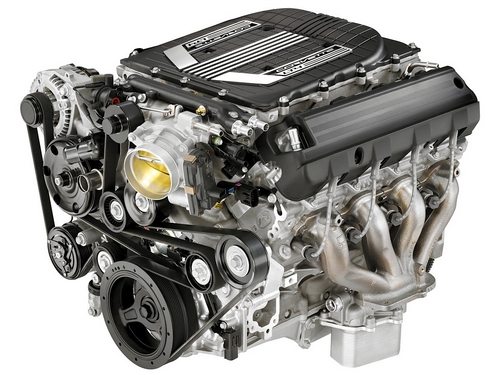
When the 2015 Corvette C7 Z06 was released, it sported the amazing Gen V LT4 V8 as its power unit. To be clear right from the start as well, the Gen V LT4 in the C7 Z06 was based on, but not the exact same engine, as the power unit that was developed in the 1990s for the C4 Grand Sport Special Edition models.
In comparison to all the other Z06 V8s. it also came with forced induction in the form of a TVS 1.7L supercharger as standard from the factory. In terms of numbers, the Gen V LT4 put down 650 HP and 650 lb-ft of torque.
This was more than enough to remove the tread from the rear tires if one wanted to do a burnout, and because a supercharger is powered off the engine directly and doesn’t need to spool up a turbine through exhaust flow, power was instantly available. This was, of course, the intention from the get-go: low-end torque, high-end power, and usable grunt across that entire rev range.
In comparison to the LT6, the LT4 had a 0.7L displacement advantage, as well as compressed and intercooled air being rammed into its cylinders. However, the disadvantage of the LT4 compared to the LT6 is that while a supercharger adds that oxygen-rich, cool, compressed air to the mixture, it also uses some of the horsepower generated by that exact same fuel/air mixture to operate. The official term for this in engine speak is “parasitic load,” and occurs in every single engine in every car on the road through alternators, water pumps, air conditioning pumps, and the like.
Still, the LT4 was the most powerful Z06 engine, and the overall most powerful engine of any Chevrolet, until the 2019 ZR-1.
The 2006 LS7 7.0L V8
2006 was an exiting year for Corvette fans. Corvette Racing had firmly established itself in multiple world GT championships, the Corvette C6 had launched the year before and built on the success of the C5 rethink of what an American sports car should be, and Corvette had just announced the specs of the biggest small-block engine to come in a production vehicle from Chevy.
That engine was the monstrous LS7 in the 2006 Corvette C6 Z06, a 7.0L behemoth that was wider than it was tall, and had the first implementation of the now-standard Corvette engine feature of a low-restriction intake manifold. In terms of numbers, 505 HP and 475 lb-ft of torque were sent through a row-your-own manual transmission to the rear wheels for tire-squealing fun.
In a very rare reverse-direction twist, the LS7 was also the base engine for the C6.Rs LS7.R powerplant. This was because the 427 cubic inches that the engine displaced was the limit at the time of what a GT-Endurance (commonly known as GTE) V8 was allowed to be.
Compared to the LT6, the LS7 had a huge 1.5L displacement advantage. The benefit of this was that with the new low-restriction intake manifold, each cylinder was getting a good flow of air, and each was taking a healthy gulp at that. As the saying goes, “there’s no replacement for displacement,” and when the cylinders performed their compression and power strokes, the higher displacement cylinders allowed for maximum dispersion of push across a big piston head to shove the power to the crank.
The biggest disadvantage of the LS7 compared to the LT6 is in terms of engine speed. A 7.0L V8 has a lot of moderately heavy bits moving around inside, and was thus limited to around 6,500 RPM. The LT6 doesn’t even reach maximum power output until it’s beyond 8,000 RPM, and through the use of lightweight but immensely strong components, can do that all day, every day.
In other words, because the internals of the LT6 are smaller, lighter, and don’t have as much mass to move with each power stroke. Consider as well the 15 years of advancement in engine technology. This is why the LS7 is considered the greatest of the LS-series of engines, as it was the last “pure” big-displacement production small block.
The 2001 LS6 5.7L V8
This is genesis for the Z06 models of the 21st century. While the Corvette C5 had been around for a little while by the time 2001 hit, Chevrolet was still able to deliver a surprise with the harder-core, sportier version of the C5 in the Z06 model. The name was chosen because back in the C2 era, if you wanted a Corvette to build into a race car, you had to know the special order code to get such a car. That code was from factory option Z-06, or production-based race car.
What the 2001 Corvette C5 Z06 carried under the hood, however, was the return of the high-power Chevy small block engine, something that had been sorely missed for the past two decades. Original producing 385 HP and 380 lb-ft of torque, the LS6 received numerous evolutionary upgrades for 2002 which saw it rise to 405 HP and 400 lb-ft of torque.
The LS6 also saw the introduction of a lot of features that would go on to be crucial to the evolutionary development of each Z06 model, such as lightweight but aggressive and durable camshafts, forged connecting rods, aluminum piston heads, and a high-flow air intake that produced an almost ram-air effect through the intake manifold.
The LS6 was also the engine that was most closely related in size and specification to the LT6, however, the horsepower difference shows just what 20-odd years of engine tech and development can do. Both engines compare extremely well to each other, as both use aluminum piston heads, forged connecting rods, and have a surprisingly close bore and stroke to each other.
Where the LT6 pulls ahead, however, is with two major areas that the LS6 did not have, due to the engine technology of the time. These two advantages are direct cylinder injection instead of port injection, and computer-controlled adjustable timing. When the LS6 came onto the scene, once you set the timing on the engine, it was set and that was that. As well, some fuel would mist away before getting into the cylinder through port injection, so you were never guaranteed a 100% fuel/air mixture.
With direct port injection, and timing that can be adjusted in minuscule amounts on the fly by the ultra-sensitive ECU and control computer for the engine, the LT6 is able to rev as high and as hard as it does, without detonating a cylinder or having anything less than a perfect fuel/air mixture.
20 Years Of Evolution & One Important Move
As you can see in the above list, 20 years of engine development and evolution has had each Z06 model come out with more powerful, stronger, more thrilling engines. The progress is also easily traced by more and more familiar components and specs of each engine, such as lightweight aluminum piston heads, forged connecting rods, low-restriction intake manifolds, and even displacement and forced induction making these V8s stronger and stronger.
However, when the 2019 Corvette ZR-1 arrived with its LT5 755 HP supercharged engine, it had reached the limit of what the Corvette could sustain with a front-mounted configuration. While it has been seen as controversial by many, moving the engine from a front mid-mount to a true mid-mount was the only way to see even more performance squeezed out of 8 cylinders.
It took a while to get there, but there are two reasons that ever since about 1987, supercar manufacturers have almost exclusively put their V8s in the mid-mount position. The first is all about handling, as putting a big lump of iron in the middle of all four wheels improves weight distribution and pushes down more evenly on all four contact patches of the tires.
The second, and engine-related reason, is that it frees up a lot more room for the engine. In a low, sleek sports car, you only have so much room to put an engine before you have to start building power humps into the hood, as the ZR-1 had to do. With the engine behind the driver, the hood can be low and aerodynamically tuned, and the engine can be taller and wider than in a front-engined configuration.
This is shown perfectly with the height of the two intake plenums on top of the LT6. There is no way that engine, in that configuration, would have fit under the hood of a front-engined body style like the C7. But by freeing up that extra space over the engine, there is more than enough room for the dual intakes that are necessary to provide enough air for the engine to safely rev beyond 7,000 RPM. In fact, the only production car with a front mid-mount engine that has ever been able to rev to 9,000 RPM was the 2000 Honda S2000, and that had a 2.0L inline-four called the F20C producing 240 HP, and that was only possible with the usage of Honda’s legendary VTEC technology.
So, having a mid-engined American supercar that can rev to 9,000, chuck out 670 HP, and look absolutely badass while doing so? We have no complaints!



